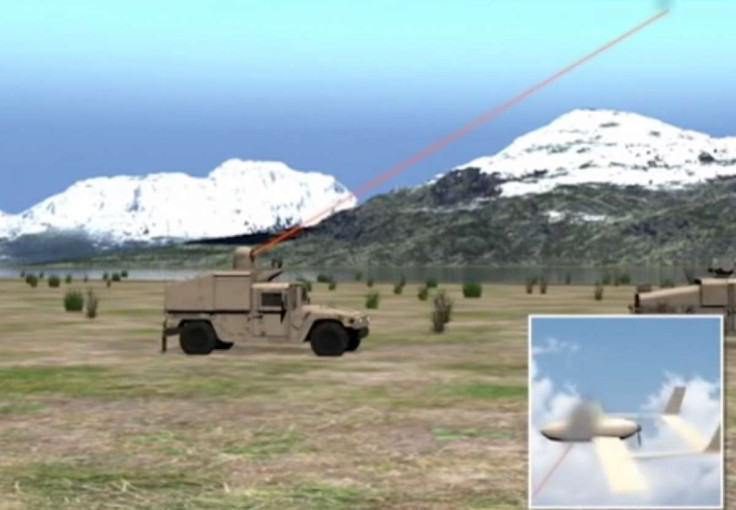US Navy debuts anti-drone laser weapon on a Humvee that shoots down enemy UAVs

The US Navy has demonstrated a laser system that can be based on a moving vehicle and used to shoot down the unmanned aerial vehicles (UAV) on the battlefield.
The Ground-Based Air Defense Directed Energy On-the-Move (GBAD) weapons system consists of a high energy laser that is mounted on a Humvee military combat vehicle, a second Humvee bearing 360 degree sensors to pick up signs of enemy drones, and a third Humvee that has a laser command centre manned by a soldier.
Researchers from the Office of Naval Research (ONR) are building various components of the system and hope to perform tests of the entire system against targets in late 2015 using a 10kW laser, before moving up to a 30kW laser, which requires three vehicles to support the whole system.
The US military has become increasingly concerned that consumer drones (not the large military type) might be used by both domestic and foreign terrorists to attack American assets and, to that end, it is already looking at using nano drones for intelligence recognisance.
In fact, at a military technology conference in January 2015 in Virginia, a video of a military exercise where a fleet of UAVs armed with automatic weapons were pitted against a convoy of armoured vehicles ended up in the drones winning.
There are already laser systems mounted on various US navy warships, such as the USS Ponce, which installed a 30kW high energy laser that can be used to disarm targets such as small boats or UAVs in 2014 that has passed all tests and is now authorised to be used as a defensive weapon.
Meanwhile, in March, defence and aerospace firm Lockheed Martin came out with a ground-based laser system that uses a single-mode fibre optic laser to disable vehicles coming from over a mile away, although the demonstration used a stationery vehicle.
"As we move into an increasing technologically advanced battlefield, unmanned aerial systems have become an inexpensive and easily acquired weapon for our enemies. The ability to prevent adversaries from tracking and attacking marines on the ground is essential for success," the ONR says in its video.
"Once fired, energy on target is near instantaneous and this weapon system will provide a deep magazine and range that exceeds current capabilities. This increases depth of fire, reduces the logistics burden of rearming and complements conventional weapons capabilities."
Towards the end of 2015, ONR's researchers will test out the laser hitting a target while standing still on a military vehicle, and in 2016, they will demonstrate that the laser is able to find and hit multiple targets while the military vehicle is on the move.
Then in 2017, the researchers hope their invention will be able to defeat one drone attack and move to another location and battle against yet another drone attack.
© Copyright IBTimes 2025. All rights reserved.






















